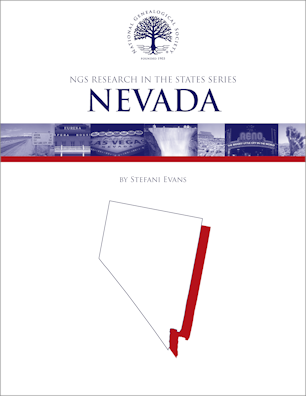 Native Americans have lived in present-day Nevada for at least seven thousand years. Today Nevada’s major tribes include Northern and Southern Paiute, Western Shoshone, and Washoe. Though Spain claimed the region in the sixteenth century and ceded control to Mexico in 1821, non-indigenous people did not settle the territory until the mid-1800s. In 1848, the United States assumed control of the region it called the Utah Territory, which included most of present-day Nevada. The Church of Jesus Christ of Latter-day Saints established missions beginning in 1848 to populate its proposed State of Deseret but closed its missions and recalled its members in 1857. By 1860, only 6,857 settlers were enumerated in Nevada. The US government established the Territory of Nevada a year later and granted statehood in 1864.
Native Americans have lived in present-day Nevada for at least seven thousand years. Today Nevada’s major tribes include Northern and Southern Paiute, Western Shoshone, and Washoe. Though Spain claimed the region in the sixteenth century and ceded control to Mexico in 1821, non-indigenous people did not settle the territory until the mid-1800s. In 1848, the United States assumed control of the region it called the Utah Territory, which included most of present-day Nevada. The Church of Jesus Christ of Latter-day Saints established missions beginning in 1848 to populate its proposed State of Deseret but closed its missions and recalled its members in 1857. By 1860, only 6,857 settlers were enumerated in Nevada. The US government established the Territory of Nevada a year later and granted statehood in 1864.
Among Nevada’s earliest non-indigenous settlers were African Americans who arrived in the Great Basin in the 1850s. Miners rushed into the territory when gold was discovered in 1859. Among them were Chinese immigrants whose numbers were augmented during the construction of the Central Pacific Railroad in the late 1860s. Others included Basques sheepherders from the Spanish and French Pyrenees, Jews, Latinos, and settlers of European descent who migrated from other US states. Even so, Nevada’s population grew slowly. During the 1930s, at the height of the Great Depression, 24,000 men from the East and Midwest and were employed by the Federal government’s Civilian Conservation Corps (CCC) to work in Nevada. The construction of Boulder (later named Hoover) Dam, also in the 1930s, drew additional workers and their families. Still, by 1940, Nevada’s population totaled only 110,247.

 Stefani Evans, CG, has served as an NGS director, Board for Certification of Genealogists (BCG) trustee, BCG Education Fund trustee, and Nevada Delegate for the Southwest Oral History Association. She chaired the NGS 2013 Family History Conference in Las Vegas and has written for the NGS Quarterly, NGS Magazine, and the NYG&B Record.
Stefani Evans, CG, has served as an NGS director, Board for Certification of Genealogists (BCG) trustee, BCG Education Fund trustee, and Nevada Delegate for the Southwest Oral History Association. She chaired the NGS 2013 Family History Conference in Las Vegas and has written for the NGS Quarterly, NGS Magazine, and the NYG&B Record.